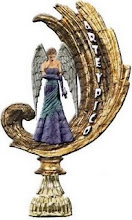
On the way home from Malvern with Gail and Frances, the weather improved a bit and the forecast for the following day was quite good - cold, but sunny. I'd originally thought of taking the Tennessee Two to Wisley and Hampton Court Palace, since at both these places there is plenty to do under cover.
Emboldened by the weather forecast, however, I decided to be a bit more adventurous and take them to Sissinghurst and Great Dixter.
Now, call me stupid, but I have often arrived at Sissinghurst - a two-hour drive from London - to find that it is shut. It shuts mid-week, so I've learned to check and double-check whether it is open on the day I intend to go there. I rang, they were open.
I rang Great Dixter. They were shut. Horrors! Were they normally closed on a Monday, I asked the nice lady who answered the phone? No, she said, they were having a study day. Couldn't we just sneak in, I asked? No, absolutely out of the question, she said.
I told her I was a journalist from The Independent and I was showing two Americans the most important English gardens. We wouldn't be there until late afternoon, I said, and we promised faithfully to keep quiet and out of everybody's way. She said she'd have a word with Fergus Garrett, the head gardener. After two heart-stopping minutes, she came back on the line. We could come!
(I'd never normally do this kind of name-dropping for myself. But Frances had said it was her favourite English garden, so how could I let her down?)
Seven miles apart, Sissinghurst and Dixter have some superficial similarities - they are both restorations of existing buildings, they are both set in the Kentish Weald (similar to the German wald, meaning woods or forest), and they are both the product of a personal, passionate vision. Both use yew hedges to enclose a series of "rooms" and both have come to epitomise English gardening at its finest.
But they are incredibly different in spirit. Sissinghurst suffers slightly from the fact that it is so popular - it is difficult to take a photograph of anything without anyone in the shot. Some people are considerate, and move out of the way, but others (like the couple eating their picnic lunch at the table under the white wisteria-clad pergola in the White Garden) are not. There is always very much the sense that it is a showplace.
We had a very odd encounter at Sissinghurst. On the way into the estate, Gail had asked me how I pronounced the English name Philippa. (The whole weekend had been one long exchange of pronunciations. It wasn't so much a case of two nations divided by a common language as two nations differing over the use of the long and short 'a').
I told her, then she said: "Do I mean Philippa? You know the Scottish actress, what's her name, Law." "Oh yes," I said, "you mean Phyllida Law."
There was a farmer's market at Sissinghurst that day and as we were browsing among the jams and pies and cheeses, a very elegant lady with a chignon came and stood beside me to sample some chutney. She looked vaguely familiar, so I sneaked a second look. It was Phyllida Law. She was with her daughter, the actress Sophie Thompson.
The Cottage Garden at Sissinghurst, which blazes with a vibrant colour scheme of red, yellow and orange. At this time of year, the starring roles are taken by wallflowers and tulips. Later in the summer, there are dahlias, kniphofia and crocosmia.
 The Nuttery, underplanted with spring flowers, including white bluebells and epimediums. In Vita Sackville-West's day it was planted with primroses and polyanthus
The Nuttery, underplanted with spring flowers, including white bluebells and epimediums. In Vita Sackville-West's day it was planted with primroses and polyanthus The Lime Walk. This is the most formal and least cottagey of the Sissinghurst gardens and it was the pet project of Harold Nicolson, Vita Sackville-West's husband. The limes are pleached and he used to like to prune them himself, which unnerved his wife, especially as he fell off the ladder a couple of times. Planted in 1932, it is now impossible to tell where the branches of one tree end and the next begin.
The Lime Walk. This is the most formal and least cottagey of the Sissinghurst gardens and it was the pet project of Harold Nicolson, Vita Sackville-West's husband. The limes are pleached and he used to like to prune them himself, which unnerved his wife, especially as he fell off the ladder a couple of times. Planted in 1932, it is now impossible to tell where the branches of one tree end and the next begin. The Moat Walk, above, is planted with yellow azaleas and bluebells. The Orchard, below, to the right of the Moat Walk, features apple trees, and ornamental cherries given to the Nicolsons by Captain Collingwood Ingram, known as 'Cherry' Ingram.
The Moat Walk, above, is planted with yellow azaleas and bluebells. The Orchard, below, to the right of the Moat Walk, features apple trees, and ornamental cherries given to the Nicolsons by Captain Collingwood Ingram, known as 'Cherry' Ingram.I can think of nothing nicer than to visit a garden in the company of other enthusiasts. For me, visiting Sissinghurst with Gail and Frances was a joy. My knowledge of plants is not extensive - I usually know about things that I like or grow. But Frances's knowledge is encyclopaedic. She pointed out the veratrum, below, which I had never seen before. I consoled myself with the thought that Vita Sackville-West might not have recognised it either - it's not mentioned in the plant index of Anne Scott-James's book on Sissinghurst, which was written in 1974.
This was intended to be a post about Sissinghurst and Great Dixter, but I've rambled on for so long I think Great Dixter will have to have a post to itself.













